Agro Products
Rice
Rice is one of the most widely consumed staple foods globally, with numerous varieties catering to different tastes and nutritional needs. Common types of rice include Basmati, a long-grain rice known for its aromatic fragrance, primarily grown in India and Pakistan, often used in biryanis and pilafs. Jasmine rice, another fragrant variety, is primarily grown in Southeast Asia and is softer and stickier when cooked, commonly used in Thai cuisine. Brown rice retains its bran layer, making it a healthier, fiber-rich alternative with a nuttier flavor, while white rice has had the bran removed, resulting in a softer, more neutral taste. Wild rice, although not technically rice, is a grain often used for its chewy texture and nutty flavor in gourmet dishes. Other types include Arborio, ideal for creamy risottos, and sticky or glutinous rice, often used in Asian desserts and sushi. Each type has its unique cooking characteristics, flavors, and applications, making rice a versatile ingredient in global cuisine.
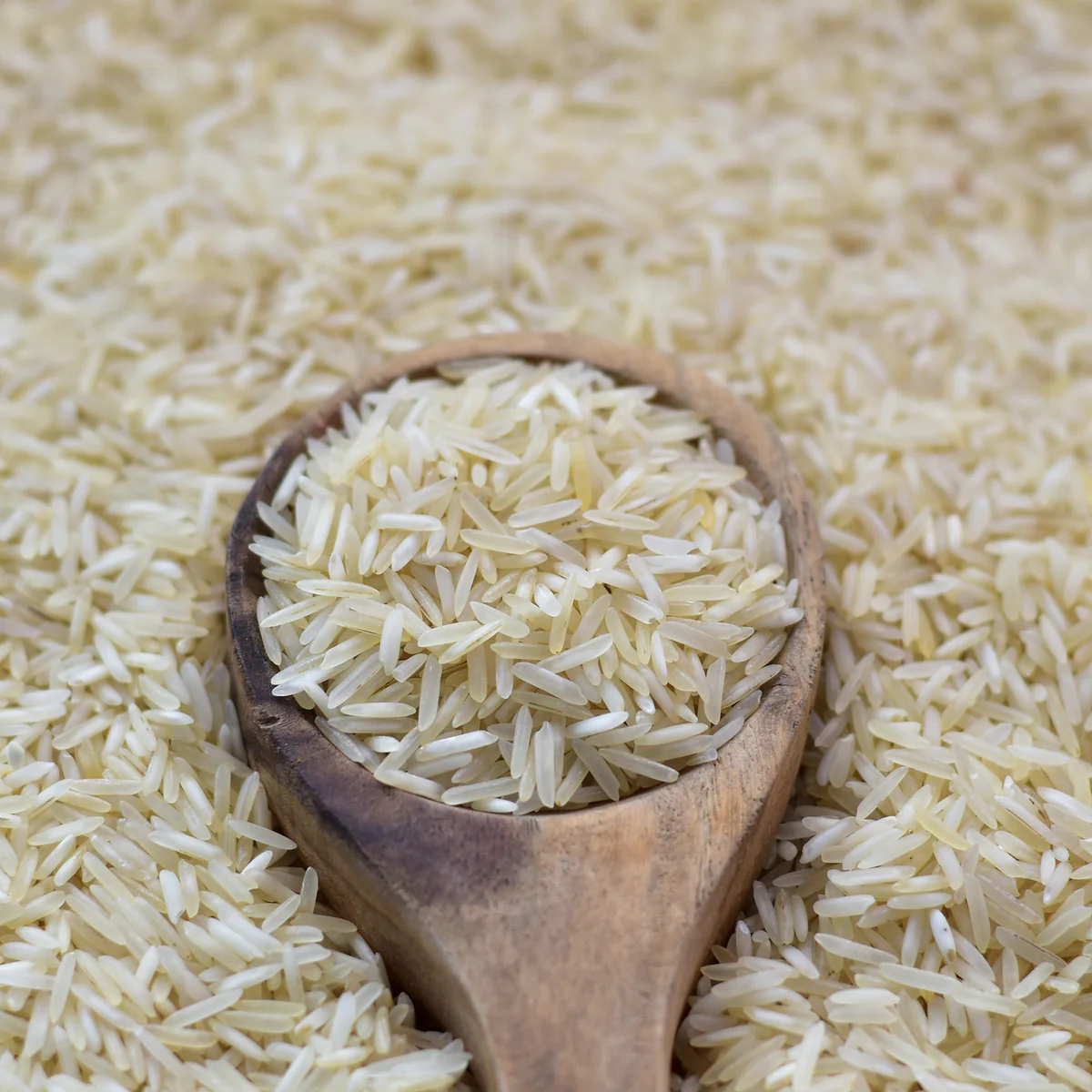
Seeds
Seeds are a diverse group of plant-based foods with varying nutritional benefits, culinary uses, and agricultural importance. Chia seeds are small, black or white seeds known for their rich omega-3 fatty acids, fiber, and ability to absorb liquid, forming a gel-like texture, often used in smoothies and puddings. Flaxseeds are another omega-3 powerhouse, valued for their high fiber and lignan content, and often ground for better nutrient absorption. Sunflower seeds, popular as a snack or salad topping, are rich in healthy fats, vitamin E, and minerals like magnesium. Sesame seeds, available in black and white varieties, are a key ingredient in tahini and add a nutty flavor to dishes. Pumpkin seeds (pepitas) are packed with zinc, magnesium, and antioxidants, commonly eaten raw or roasted. Hemp seeds provide a complete source of protein with all essential amino acids, making them popular in vegan diets. Mustard seeds are a staple in spice blends, known for their sharp, pungent flavor when ground or cooked. Other notable seeds include quinoa, technically a seed but used like a grain, and poppy seeds, often used in baked goods for their mild flavor and crunchy texture. These seeds vary in their nutrient profiles and culinary applications, but all contribute to a healthy diet.

Spices
Spices are aromatic plant-derived ingredients used to flavor, color, and preserve food, playing an essential role in global cuisines. Black pepper, known as the “king of spices,” is widely used for its pungent flavor and heat, often ground fresh. Cumin has a warm, earthy flavor and is a key spice in many Middle Eastern, Indian, and Mexican dishes. Turmeric is prized for its bright yellow color and subtle bitterness, also known for its anti-inflammatory properties. Coriander seeds, with their citrusy and slightly sweet flavor, are used both ground and whole in various spice blends like garam masala. Cinnamon, both in stick and ground form, is commonly used in both sweet and savory dishes, imparting warmth and sweetness. Cloves, with their intense, sweet, and spicy flavor, are often used in curries and baked goods. Cardamom, a highly aromatic spice, comes in green and black varieties, used in both desserts and spiced teas. Fenugreek adds a slightly bitter, nutty flavor, common in Indian cuisine. Chili powder and paprika bring varying levels of heat and sweetness, often used to add spice and color. Other common spices include ginger, nutmeg, star anise, and saffron, each contributing unique flavors to global dishes, making them indispensable in both traditional and modern cooking.

Honey & Jaggery
Honey and jaggery are natural sweeteners, each with unique flavors, nutritional profiles, and culinary uses. Honey is a thick, golden liquid made by bees from flower nectar, varying in taste and color based on the type of flowers the bees pollinate. It ranges from mild-flavored acacia honey to rich, dark manuka honey, known for its antibacterial properties. Honey is widely used as a sweetener in beverages, desserts, and sauces and is praised for its antioxidants and soothing effects on sore throats. Jaggery, on the other hand, is an unrefined sugar made from sugarcane or palm sap, widely used in South Asia and Africa. It has a deep, caramel-like flavor with hints of molasses and is available in solid blocks, granules, or liquid form. Unlike refined sugar, jaggery retains essential minerals like iron, magnesium, and potassium, making it a healthier alternative. Jaggery is often used in traditional sweets, beverages, and savory dishes, adding richness and complexity. Both honey and jaggery offer a more natural sweetness compared to refined sugar and are favored for their distinct flavors and health benefits.

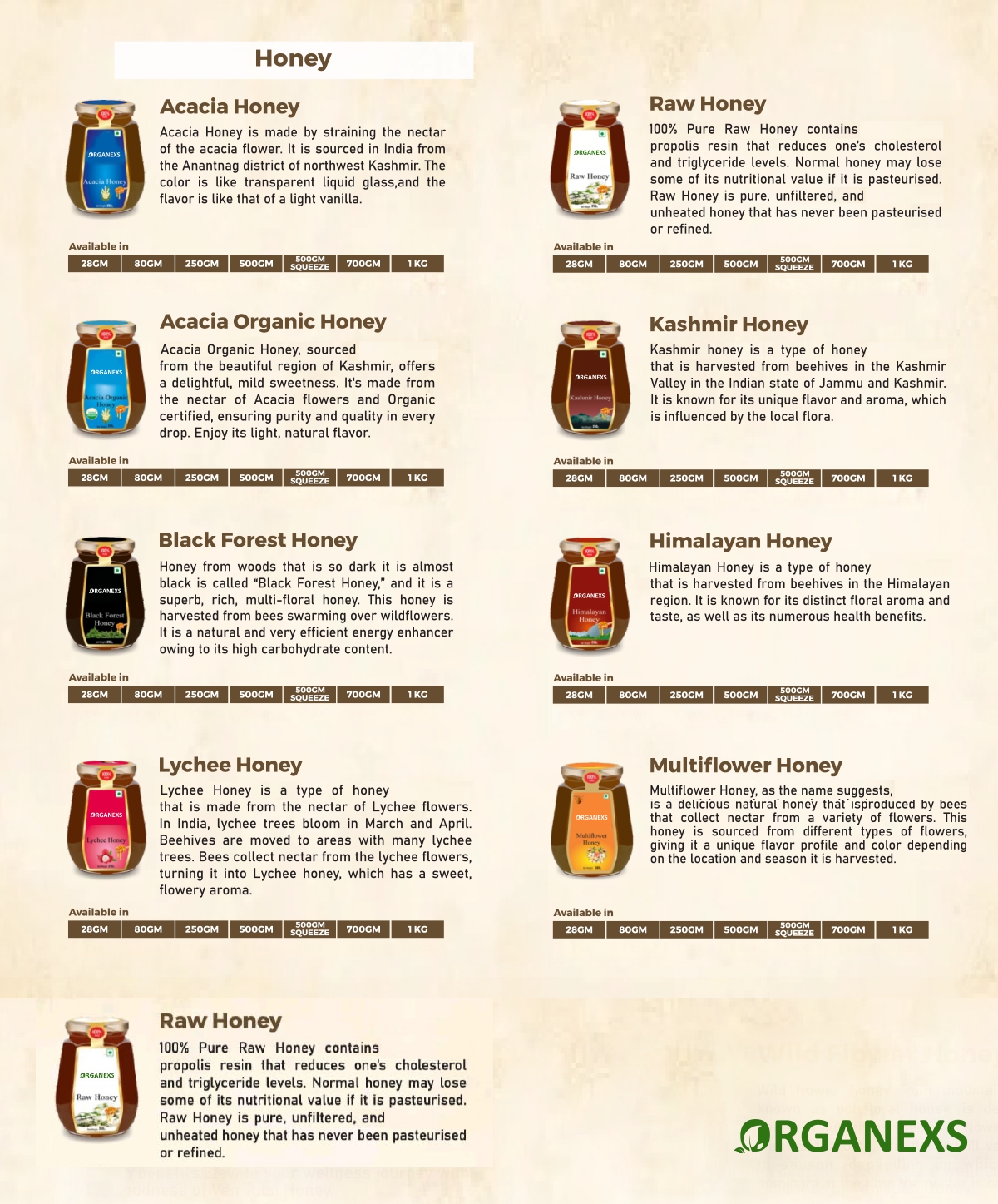
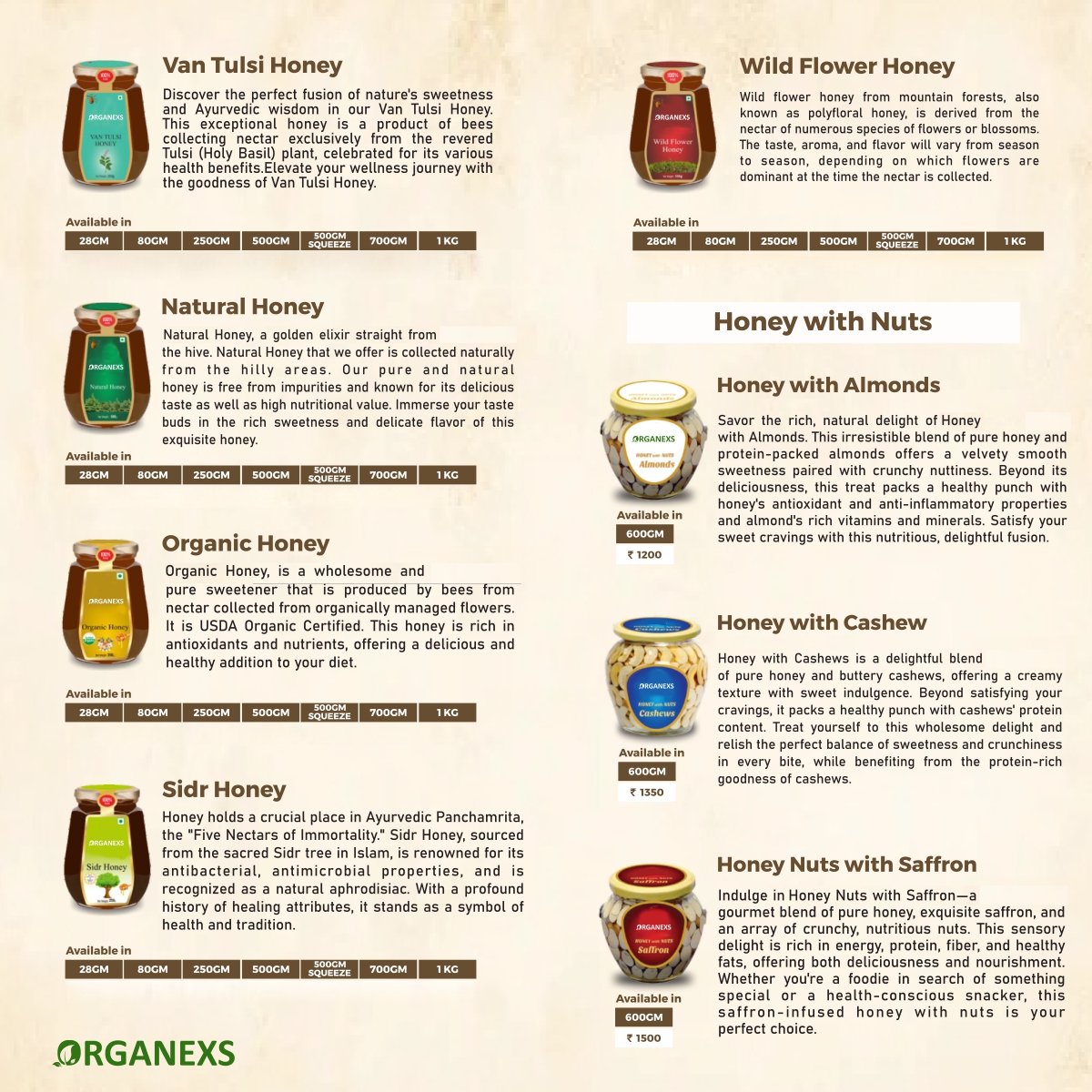
Mango Pulp
Mango pulp is a versatile and widely used product made from the flesh of ripe mangoes, offering the sweet, rich flavor of mangoes in a convenient form. The most common types of mango pulp are derived from popular varieties like Alphonso, Totapuri, and Kesar. Alphonso mango pulp is known for its vibrant orange color, smooth texture, and intensely sweet taste, making it ideal for premium desserts, smoothies, and beverages. Totapuri mango pulp has a more tangy and less sweet profile, often used in juices, sauces, and processed foods. Kesar mango pulp is known for its golden hue and balanced sweetness with a mild flavor, commonly used in Indian sweets, ice creams, and milkshakes. Mango pulp is also available in organic variants, free from artificial preservatives, and can be used for making jams, syrups, baby foods, and fruit fillings. It retains the natural aroma, taste, and nutritional benefits of mangoes, including vitamins A and C, making it a popular choice in both home and commercial kitchens worldwide.
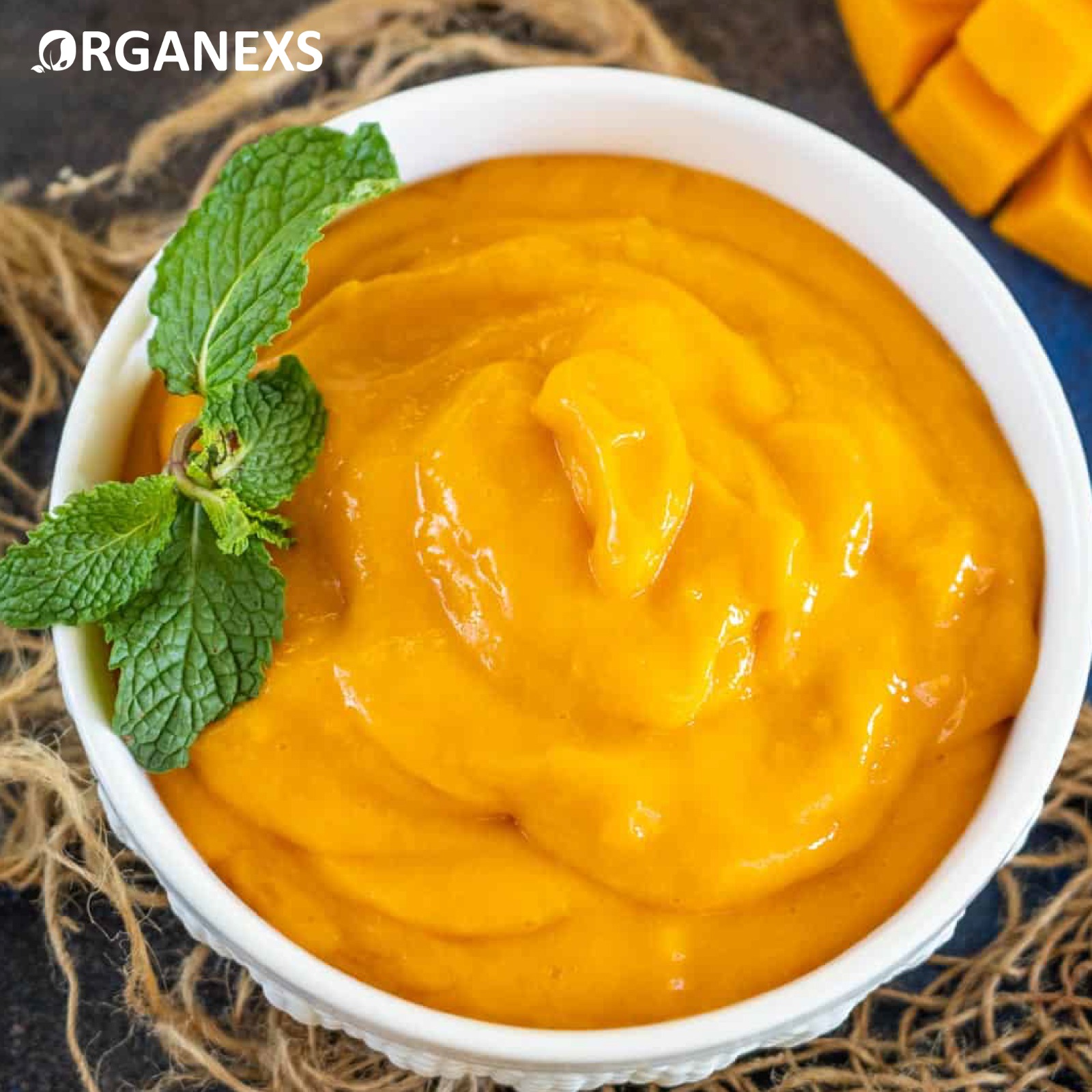
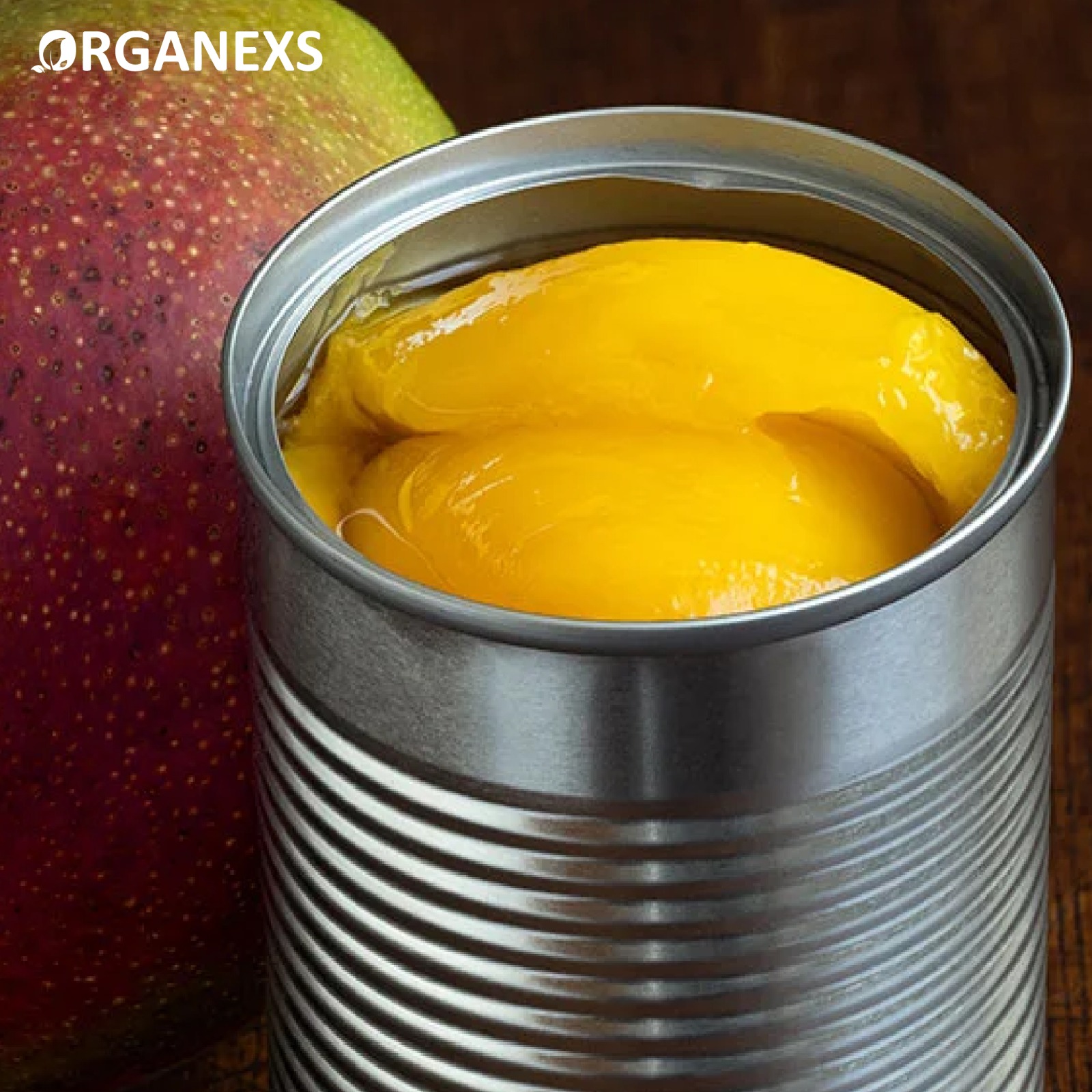
Get In Touch
Visit Us
ORGANEXS (Export Division) S.S DEWAN & Co. Near Dreamland Fun Park, G.T Road, Sahnewal Khurd Ludhiana-141120 (Punjab) INDIA.
Email US
dewan@organexs.com
Call Us
+919814117071
